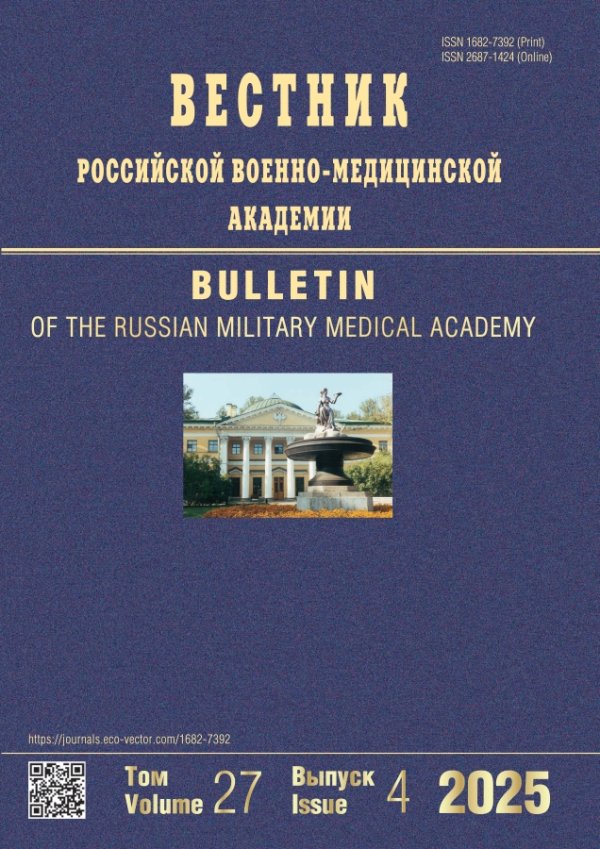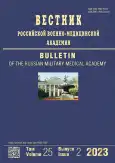Ambulatory complementary technologies in primary care for domestic healthcare
- 作者: Karailanov M.G.1, Mikheev A.V.1, Prokin I.G.1, Apchel A.V.2
-
隶属关系:
- Kirov Military Medical Academy
- North-Western Medical Training Center for Postgraduate Education
- 期: 卷 25, 编号 2 (2023)
- 页面: 269-274
- 栏目: Review
- URL: https://journals.rcsi.science/1682-7392/article/view/134107
- DOI: https://doi.org/10.17816/brmma192514
- ID: 134107
如何引用文章
详细
In recent years, the primary healthcare sector in our country has undergone significant development, driven by the implementation of tasks and the achievement of key indicators outlined in the National Healthcare Project. This growth has been supported by the country’s economic progress, leading to increased funding for the healthcare industry. Recently, a notable shift in focus has been toward preventive measures and outpatient care in medical facilities that provide primary health services. These measures include promoting a healthy lifestyle, assessing disease risks, and ensuring timely treatment and monitoring. The primary objective of all therapeutic and preventive measures is to enhance the lifespan and quality of life of our population. Since its establishment in 2020, the modernization of primary care, identified as a priority for healthcare development in the upcoming years, has made significant strides in improving accessibility and the quality of medical services. A key driver of this progress of healthcare in the Russian Federation is the extensive use of modern medical technologies, particularly in the provision of primary health care. This shift has also necessitated significant changes in professional terminology within the field. Consequently, an in-depth analysis of the potential integration and widespread use of modern medical technologies in medical facilities providing primary health care has led to the proposal of a new term: “ambulatory complementary technologies”. This term aims to enhance the conceptual framework of primary healthcare systems and eliminate discrepancies in medical professional terminology. This paper not only describes the reasons behind the emergence of the term “ambulatory complementary technologies” but also provides a clear definition and outlines prospects for its further development. By introducing this term, we aim to achieve a more accurate interpretation of the key indicators used to comprehensively assess primary healthcare across various regions of the Russian Federation. Ultimately, these efforts are geared toward enhancing the effectiveness of primary healthcare organizations.
作者简介
Mikhail Karailanov
Kirov Military Medical Academy
编辑信件的主要联系方式.
Email: karaylanov@mail.ru
ORCID iD: 0000-0001-6584-9492
SPIN 代码: 7110-9788
Scopus 作者 ID: 23473000300
Researcher ID: J-1471-2016
MD, Dr. Sci. (Med.), associate professor
俄罗斯联邦, Saint PetersburgAlexey Mikheev
Kirov Military Medical Academy
Email: karaylanov@mail.ru
ORCID iD: 0000-0001-6107-6576
SPIN 代码: 3484-2377
MD, Cand. Sci. (Med.), assistant professor
俄罗斯联邦, Saint PetersburgIgor Prokin
Kirov Military Medical Academy
Email: karaylanov@mail.ru
ORCID iD: 0000-0002-8153-2644
SPIN 代码: 3913-2133
MD, Cand. Sci. (Med.)
俄罗斯联邦, Saint PetersburgAndrey Apchel
North-Western Medical Training Center for Postgraduate Education
Email: karaylanov@mail.ru
SPIN 代码: 2298-8459
MD, Dr. Sci. (Med.)
俄罗斯联邦, Saint Petersburg参考
- Cherkasov SN, Shipova VM, Berseneva EA, et al. Modern methodical approaches to planning of medical care. Bulletin of Semashko National Research Institute of Public Health. 2016;(4): 95–109. (In Russ.).
- Volkova OA. K voprosu povysheniya ehffektivnosti upravleniya resursami meditsinskikh organizatsii, osushchestvlyayushchikh deyatel'nost' v sfere gosudarstvennogo zdravookhraneniya. Sbornik trudov 170 Nauchno-issledovatel'skogo instituta organizatsii zdravookhraneniya i meditsinskogo menedzhmenta. 2019. P. 31–35. (In Russ.).
- Medik VA. Organizatsionnye osnovy deyatel'nosti sistemy zdravookhraneniya. Starodubov VI, Shchepin OP, et al editors. Obshchestvennoe zdorov'e i zdravookhranenie. Natsional'noe rukovodstvo. Moscow: GEOTAR-Media, 2013. P. 188–202. (In Russ.).
- Zasimova LS, Kadyrov FN, Salakhutdinova SK, Chernets VA. Vnedrenie novykh tekhnologii v meditsinskikh organizatsiyakh: zarubezhnyi opyt i rossiiskaya praktika. Moscow, 2013. 271 p. (In Russ.).
- Proklova TN, Karpova OB, Telnova EA. On the efficiency of the functioning of the health system of the Russian Federation. Bulletin of Semashko National Research Institute of Public Health. 2017;(2):49–54. (In Russ.).
- Pavlov KV, Stepchuk MA, Pinkus TM, et al. Modernizatsiya zdravookhraneniya regiona: napravleniya, formy i metody. Regional economics: theory and practice. 2011;(30):55–64. (In Russ.).
- Mikheev AV. Mesto vnutrennego kontrolya kachestva i bezopasnosti meditsinskoi deyatel'nosti v formirovanii i funktsionirovanii sistemy menedzhmenta kachestva v meditsinskoi organizatsii. Proceedings of the science and practice conference «Ehkonomika, menedzhment i marketing v voennom i grazhdanskom zdravookhranenii». 2013. С. 123–124. (In Russ.).
- Avdeeva MV, Vashchenkov VV, Luchkevich VS, Barkaeva VA. Rating of medical organizations as a way to improve effectiveness of health care: background and prospects for implementation. Social aspects of population health. 2015;(4):1–13. (In Russ.).
- Rusev IT, Karailanov MG, Fedotkina SA, et al. Assessment of the effectiveness of military medical organizations providing primary health care. Russian military medical journal. 2018;(2):4–10. (In Russ.). doi: 10.17816/RMMJ72844
- Prokhorov AM, editor. Bol'shoi ehntsiklopedicheskii slovar’. Moscow: Sovetskaya ehntsiklopediya. Saint Petersburg: Fond «Leningradskaya Galereya», 2002. 1628 p. (In Russ.).
- Evdakov VA, Mel'nikov YuYu, Smyshlyaev AV. Rol' dnevnykh statsionarov v razvitii statsionarozameshchayushchikh form meditsinskoi pomoshchi. Chief physician. 2017;(1):3–10. (In Russ.).
- Kontsevaya AV, Kalinina AM. Otsenka ehkonomicheskoi ehffektivnosti meditsinskikh tekhnologii. Zamestitel' glavnogo vracha. 2008;(2):90–94. (In Russ.).
- Khabriev RU, Serpik VG. Special issues on implementation of innovations into Russian Healthcare System. Bulletin of Semashko National Research Institute of Public Health. 2016;(4):5–16. (In Russ.).
- Fedotkina SA, Karailanov MG, Rusev IT. Rational use of technology and inpatient forms of medical care. Vestnik of Saint Petersburg University. Medicine. 2017;12(2):179–189. (In Russ.).
- Komarov YuM. Strategiya razvitiya zdravookhraneniya v Rossiiskoi Federatsii. Zdravookhranenie. 2008;(2):53–62. (In Russ.).
补充文件








